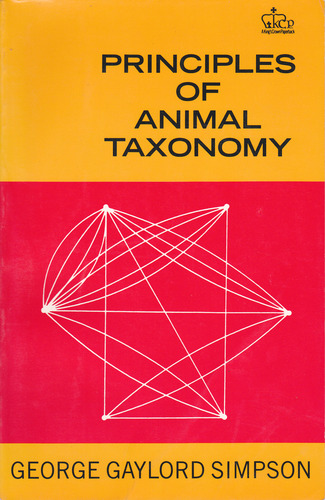Principles of animal taxonomy pdf download
Par brown donald le vendredi, mai 6 2016, 07:51 - Lien permanent
Principles of animal taxonomy. George Gaylord Simpson

Principles.of.animal.taxonomy.pdf
ISBN: 023109650X,9780231096508 | 131 pages | 4 Mb

Principles of animal taxonomy George Gaylord Simpson
Publisher: Columbia University Press
This course begins with an overview of key concepts in zoology as students examine the characteristics of the animal cell and discuss heredity and issues of evolution, including natural selection. They then turn to taxonomy, as they study increasingly complex types of animals. The system that we still use today for giving scientific names to plants and animals has many founders, from the Greek philosopher Aristotle to the Swedish physician and botanist Carolus Linnaeus. Scientifically, it is called taxonomy and rooted in ancient Greek. Linnaeus, Carolus (kärō'ləs lĭnā'əs), 1707-78, Swedish botanist and taxonomist, considered the founder of the binomial system of nomenclature and the originator of modern scientific classification of plants and animals. According to Simpson (“Principles of animal taxonomy”), a taxonomy is a “classification, including bases, principles, procedures and rules”. An arrangement, order + a law.] That division of the natural sciences which treats of the classification of animals and plants; the laws or principles of classification. The first significant definitions were developed by Aristotle. He studied botany and medicine and Of his higher groupings, only those for animals are still in use, and the groupings themselves have been significantly changed since their conception, as have the principles behind them. Principles of Animal Taxonomy (no.20). While he continued throughout his lifetime to revise and expand this great work, so his successors have continued to revise the principles of taxonomy, now according to genetic principles, informed by the analysis of DNA. Herpetological Survey Techniques. From microscopic investigation to the basics of veterinary medicine, Zoology covers principles of comparative animal anatomy, physiology, and genetics. Introduction Biology as a science, put the various organisms as its object of study. Webster's Revised Dictionary (1913 Edition) [1]. The end result was a classification of existing 'data assets' into three main types of animals (although I would later argue the animals were really different zoos.) From this I During the UX design a fundamental principle was data integrity. Icthyological Survey Techniques. Introduction to Eco-systems of Pakistan.
Cardinal and ordinal numbers book
Minimally Invasive Plate Osteosynthesis (MIPO) epub